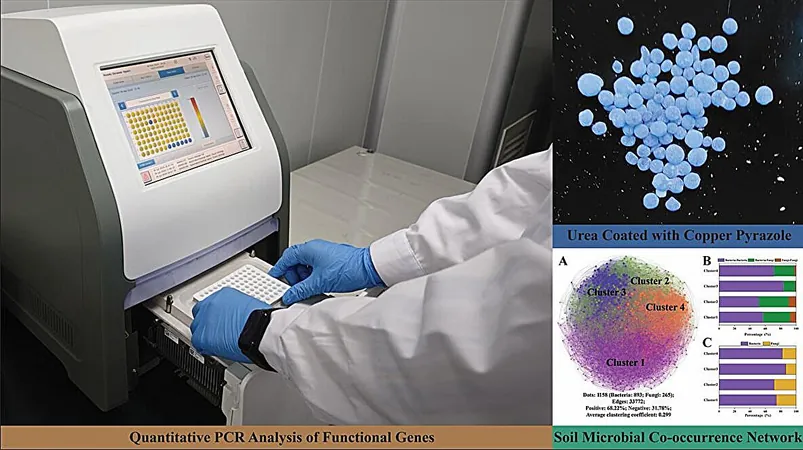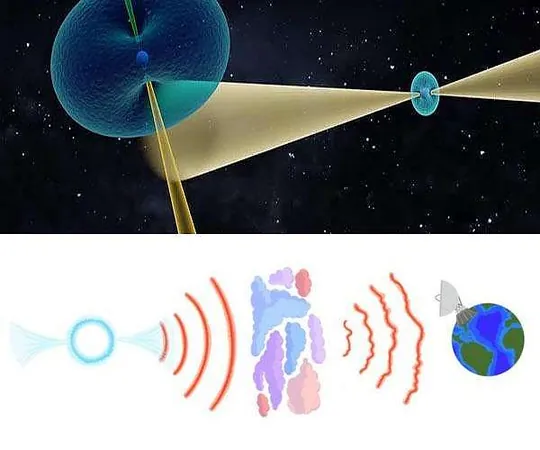
Breakthrough in Agriculture: New Nitrification Inhibitor Set to Revolutionize Nitrogen Use Efficiency!
2024-11-25
Author: Ming
Introduction
In an exciting development that could transform agricultural practices, a research team led by Professor Wu Lifang at the Hefei Institutes of Physical Science of the Chinese Academy of Sciences has unveiled a groundbreaking nitrification inhibitor known as copper pyrazole. This innovative compound is being paired with a slow-release fertilizer, signaling a new era in nitrogen management for farmers.
Importance of the Advancement
Dr. Duan Yan, a prominent member of the research team, emphasizes the importance of this advancement: “This new approach aims to dramatically improve nitrogen (N) use efficiency in agriculture.” The significant findings from their study were recently published in the esteemed journal, *Frontiers in Microbiology*, showcasing the potential of copper pyrazole in addressing one of agriculture's most pressing challenges.
Global Context and Need for Improvement
The quest to enhance nitrogen utilization in farming is gaining momentum globally. As concerns about soil degradation and environmental impact mount, nitrification inhibitors are emerging as a popular strategy. These substances work by reshaping the soil’s microbial community and modulating nitrification and denitrification processes, which can markedly increase nitrogen availability for crops.
Research Findings
In their comprehensive 60-day soil experiment, the research team meticulously examined how copper pyrazole influences the levels of ammonium and nitrate nitrogen in soil, alongside its effects on microbial communities. The findings revealed that copper pyrazole effectively decelerates both nitrification and denitrification processes. This is achieved by inhibiting urease activity—a critical enzyme in nitrogen transformation—and reducing the prevalence of specific nitrification (AOB–amoA) and denitrification genes (nirK) within the soil.
Microbial Community Dynamics
Moreover, the research indicated that copper pyrazole alters the composition and functionality of the soil’s microbial community. Through thorough analysis, the team pinpointed essential microorganisms involved in nitrogen cycling, forming the basis for potential future applications in enhancing soil health and crop productivity.
Combining with Slow-Release Fertilizers
It’s also noteworthy that incorporating the coated slow-release fertilizer in conjunction with copper pyrazole significantly boosts the efficiency of nitrogen fertilizer utilization, maximizing benefits for agricultural yields while minimizing negative environmental impacts.
Conclusion and Future Prospects
This pioneering work not only provides scientific backing for the strategic application of nitrification inhibitors but also offers a sustainable pathway for modern agriculture. As farmers and researchers alike look toward innovative solutions, copper pyrazole could very well be the key to unlocking a greener future in agriculture. Stay tuned for further developments that could pave the way for a more sustainable food production model!




 Brasil (PT)
Brasil (PT)
 Canada (EN)
Canada (EN)
 Chile (ES)
Chile (ES)
 España (ES)
España (ES)
 France (FR)
France (FR)
 Hong Kong (EN)
Hong Kong (EN)
 Italia (IT)
Italia (IT)
 日本 (JA)
日本 (JA)
 Magyarország (HU)
Magyarország (HU)
 Norge (NO)
Norge (NO)
 Polska (PL)
Polska (PL)
 Schweiz (DE)
Schweiz (DE)
 Singapore (EN)
Singapore (EN)
 Sverige (SV)
Sverige (SV)
 Suomi (FI)
Suomi (FI)
 Türkiye (TR)
Türkiye (TR)